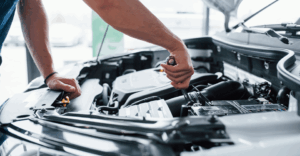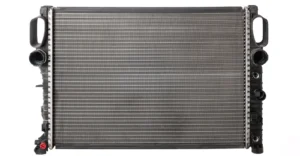Car window tinting can offer many benefits, from UV protection to improved privacy and a cooler cabin. But if your tint has started to bubble, fade, or simply doesn’t suit your style anymore, it might be time to peel it off.
While getting tint professionally removed is always an option, many car owners prefer to tackle this task themselves. The key is removing both the film and the adhesive underneath without damaging the glass or embedded features like defroster lines.
Here are three proven methods to safely remove car window tint at home, plus some tips to make the job smoother.
Understanding What You’re Removing
Most window tint is a multi-layer polyester film bonded to the interior side of the glass. The tint layer darkens the window, while a strong adhesive holds it in place. That adhesive is the main challenge during removal the goal is to remove it along with the film, rather than scraping it off afterward.
Avoid using metal blades or abrasive tools on windows with embedded heating or antenna wires, especially on rear windshields. Damaging these elements can result in costly repairs.
Method 1: Steam Removal (Recommended)
Why it works: The heat and moisture from steam softens the adhesive, making it easy to peel off the tint film in large sections.
What you need:
- A fabric or clothing steamer
- Microfiber cloths
- Adhesive remover (like Goo Gone)
Steps:
- Fill and power on the steamer.
- Hold the steam wand near a corner of the window for 30–60 seconds.
- Once you can lift a corner of the film, slowly peel it back while continuing to apply steam to where the film meets the glass.
- After removal, use adhesive remover and a cloth to clean off any remaining residue.
Pro Tip: Always wear gloves and long sleeves to avoid burns. Work in a ventilated area to avoid condensation buildup.
Method 2: Ammonia & Sunlight (Traditional but Hazardous)
Why it works: Ammonia breaks down the adhesive, and heat from the sun accelerates the process.
Why it works: Ammonia breaks down the adhesive, and heat from the sun accelerates the process.
What you need:
- Undiluted ammonia or isopropyl alcohol
- Black plastic bags cut to window size
- Soapy water spray
- Razor blade or plastic scraper (only for glass without wires)
- Protective gloves, mask, and goggles
Steps:
- Spray soapy water on the exterior of the window, and apply one black plastic sheet over it.
- Inside the car, spray ammonia directly on the tint film and cover it with the second plastic sheet.
- Let the car sit in full sun for at least 60 minutes.
- Peel the film slowly from one corner, spraying more ammonia where needed.
- Clean off remaining glue with ammonia and soapy water. Use ultrafine steel wool for stubborn spots, if safe to do so.
Caution: Avoid using ammonia near tinted plastic surfaces or electronics. Always ventilate the area thoroughly.
Method 3: Hair Dryer Heat Method (Beginner-Friendly)
Why it works: Like steam, dry heat softens the adhesive so the tint can be peeled off more easily.
What you need:
- Hair dryer
- Fingernail or plastic scraper
- Microfiber towels
- Adhesive remover
Steps:
- Hold the dryer a few centimetres from a corner of the tint and heat for about 30 seconds.
- Use a fingernail to lift the film and slowly peel it back, heating ahead of the peeled edge.
- Once removed, soften and wipe away any adhesive with heat and cleaning solution.
Best For: Small tint sections or cars with delicate defrosts wires.
How to Remove Residue and Clean Your Windows
Regardless of the method, some adhesive might remain on the glass. Here’s how to deal with it:
- Apply adhesive remover or a homemade mix of vinegar and water
- Use a microfiber towel and firm circular motions
- Finish with auto glass cleaner to ensure clarity and streak-free shine
Never use ammonia-based cleaners on windows with aftermarket tint or if you plan to reapply tint, as it can damage the new film.
Tips to Avoid Future Tint Hassles
- Use sunshades and garage parking to prolong the life of window film
- Invest in quality tint products with warranties
- Regularly clean the inside of windows to prevent buildup that contributes to bubbling or peeling
Final Thoughts
Removing car window tint isn’t always quick, but it can definitely be done at home with the right tools and patience. Steam offers the cleanest results with the least risk, while the ammonia and hair dryer methods are effective for DIYers who take the proper precautions.
Need help with tint removal or looking to upgrade your car’s style? Book a professional detailing or tinting service with MotorHub today.
MotorHub services are also available through partner workshops across the UAE, offering top-quality car care, tint removal, and more.



